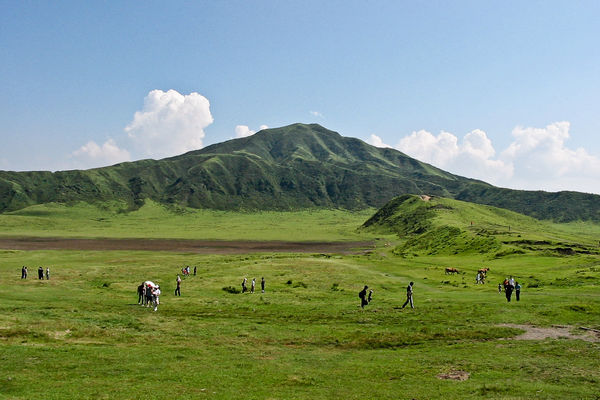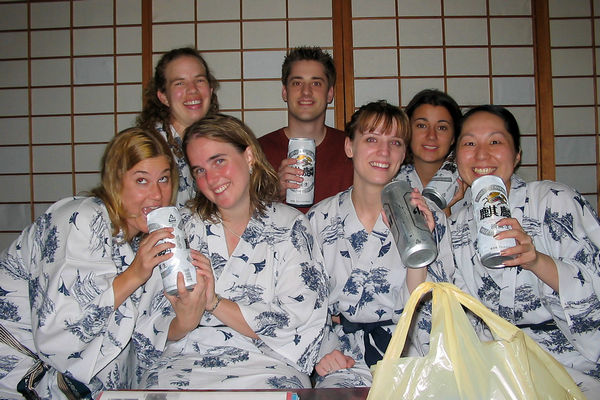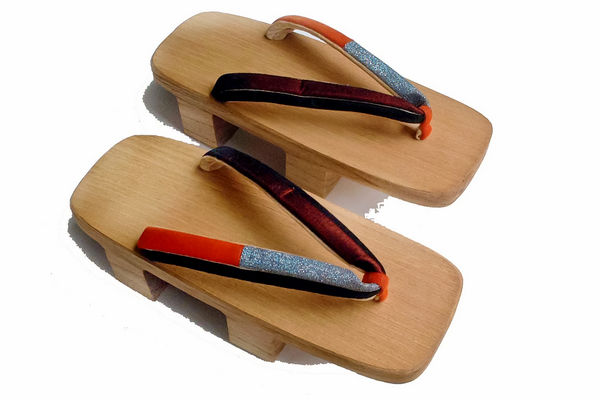- 1 - Braving Japanese-Style Accommodation on Mount Aso
- 2 - If You Can’t Take The Heat, Get Out Of The Onsen
- 3 - Viewing Mount Aso’s Crater…For 30 Seconds
Accommodation is easily the biggest expense when traveling in Japan, but you can cut down on your costs quite a bit, if you are willing to move away from the standard western hotel or hostel experience. In most cities and towns, the best value is found at a minshuku. This stripped-down version of a ryokan (traditional Japanese inn) has little, if any, of the amenities and pampering offered at a ryokan and is basically just a much cheaper place to rest your head. Of course, few speak much English and even fewer bother to cater to western tourists at all. This can make for some interesting experiences.
My first stay in a minshuku came a few months after I arrived in Fukuoka on the southern island of Kyushu. Some friends and coworkers had planned a trip to nearby Mount Aso, one of the largest active volcanoes on earth. It sits in one of the world’s largest calderas, found in the middle of Kyushu.

The Kusasenri meadow just below the crater in Mount Aso’s caldera
To get to Aso from Fukuoka, we took a train to Kumamoto then switched to another train that actually had to change direction several times to climb the switchbacks up to the rim of the caldera. We pulled into Aso station sometime in the afternoon and headed straight to our minshuku.
We had one Japanese person in our group and she had called to book a room ahead of time. We would have never managed to make that booking without her and we probably wouldn’t have even realized the place existed, since minshuku rarely have English signs.
Once we arrived and the proprietor struggled with the English word ‘hello’, we knew we wouldn’t have even been able to check in on our own. We were all fairly new to Japan and our combined knowledge of the language at that point was slightly below the owner’s knowledge of English. Even with our Japanese friend, we still managed to screw some things up and get ourselves in a bit of trouble. Well, not all of us; it was just me and one other person, but since this is my blog, she’ll be taking 100% of the blame. For now, though, we managed to check in without incident and in the process, we realized we could have saved the trouble of calling ahead.
The place was completely deserted and that never changed the whole time we were there. Apart from the owner, we saw no sign of life. The common area had the potential to be a nice place to hang out, with a couch and a ping pong table, but the age of the furniture and the dim to nonexistent lighting gave the whole room a creepy feel and it was hard to imagine anyone had spent much time there in the past few decades.
Overall, the minshuku was pretty basic. We got one large room for all of us, with a futon (in the Japanese sense; i.e. a thin mattress) each to put on the floor and a yukata and a pair of wooden torture devices sandals known as geta for each of us. All but one of us were very excited to try on this traditional Japanese ensemble. I’ll let you judge from the picture who the unenthusiastic one was.

I did try on a yukata eventually and they are pretty comfortable
More on those giant beers we’re holding later. For now, we (by which I mean everyone but me) had decided we should check out the nearby hot spring. Hot springs are one of those Japanese things every visitor feels they have to try out at least once and many end up enjoying the experience and returning many times. I have never particularly enjoyed sitting motionless in a tub of water and was not expecting a visit to a hot spring to be an overly pleasurable experience. It turns out my expectations were much too high.
I almost didn’t even bother going, but I figured I should try it at least once to see what the fuss is about. Besides, it was probably the only way we had to get clean. One characteristic of Japanese-style accommodation is a lack of showers. Instead, they generally provide a common bathroom where guests can soak in a tub of scalding water; and it seems some people even consider this an amenity, not a hardship. Since the Aso area is famous for hot springs and there was a public one just down the road from us, I don’t think our place even had a bath, although none of us bothered to check. The hot-spring was one of the main reasons for coming to Aso for 6/7 of us.
To make the hot spring experience as miserable authentic as possible, I joined the others in donning my yukata and geta. The yukata was comfortable, but the same cannot be said for the sandals. The clumsy and unevenly attached wooden blocks that serve as soles make each step a health insurance provider’s dream and the rope that removes every last layer of skin between your toes adds a healthy dose of pain.

A pair of geta; the lack of bloodstains tells me they’ve never been worn. Photo by Haragayato.
They are, in short, the most uncomfortable and unpractical pair of shoes known to man and I have no idea how anyone gets anywhere while wearing them. I swear it took us an hour to walk 100 meters and I have to say, I can’t remember seeing a single Japanese person during my whole time in the country who looked completely comfortable in them either.
Series continued in part 2: If You Can’t Take The Heat, Get Out Of The Onsen

I hope you have video footage of what it’s like to walk in those sandals. 😉 I imagine there would be a lot of tripping and shuffling.
Audrey recently contributed to world literature by posting..Answering Your FAQ’s About Teaching in CHINA!
This was so long ago I’m not even sure cameras HAD a video function. The 2 MP point-and-shoot I had at the time certainly didn’t. And even if we’d had a video camera, there’s no way anyone would have been able to hold it still, given all the arm flailing necessary to stay upright and the uncontrollable laughter that was the direct result of said arm flailing.
And if we did have footage, we would have watched it “Hangover” style: view it once as a group, then delete it and never speak of it again…
Daniel McBane recently contributed to world literature by posting..An Elephant Gets Revenge
Guess we’ll just call ’em Klunk Flops from here on 😉
Graefyl recently contributed to world literature by posting..Redefining the Torndot Blog
That’s a lot more child-friendly than what I was calling them…
Daniel McBane recently contributed to world literature by posting..Chame to Pisang: Just Takin’ the Goat for a Walk
But there was that can of beer …..
Graefyl recently contributed to world literature by posting..Pukka Pad misplacement
I love a Japanese onsen. Especially on a cold, dreary winter’s night, like tonight…I love them.
Sounds like you didn’t. Love the yukatas!
Corinne recently contributed to world literature by posting..Our Top 7 World Heritage Sites of 2013
I definitely did not enjoy the onsen. To be fair though, I went in the middle of summer. I imagine I might have enjoyed it a bit more in the winter, especially one of those outdoor onsen where you sit in the tub while looking out over the snow-covered landscape. I probably still would have gotten bored after ten minutes or so, but it would have definitely been preferable to sitting in a tub of hot water in the hot and humid Japanese summer.
Daniel McBane recently contributed to world literature by posting..A Good Day in Hsipaw Spent With Kids, Cows and Trash
Sapporo is my favorite!
I’ve never been there, but I’m pretty sure I would love it, so I definitely need to go.
Daniel McBane recently contributed to world literature by posting..The Hassle of Finding a Hotel in Rural China